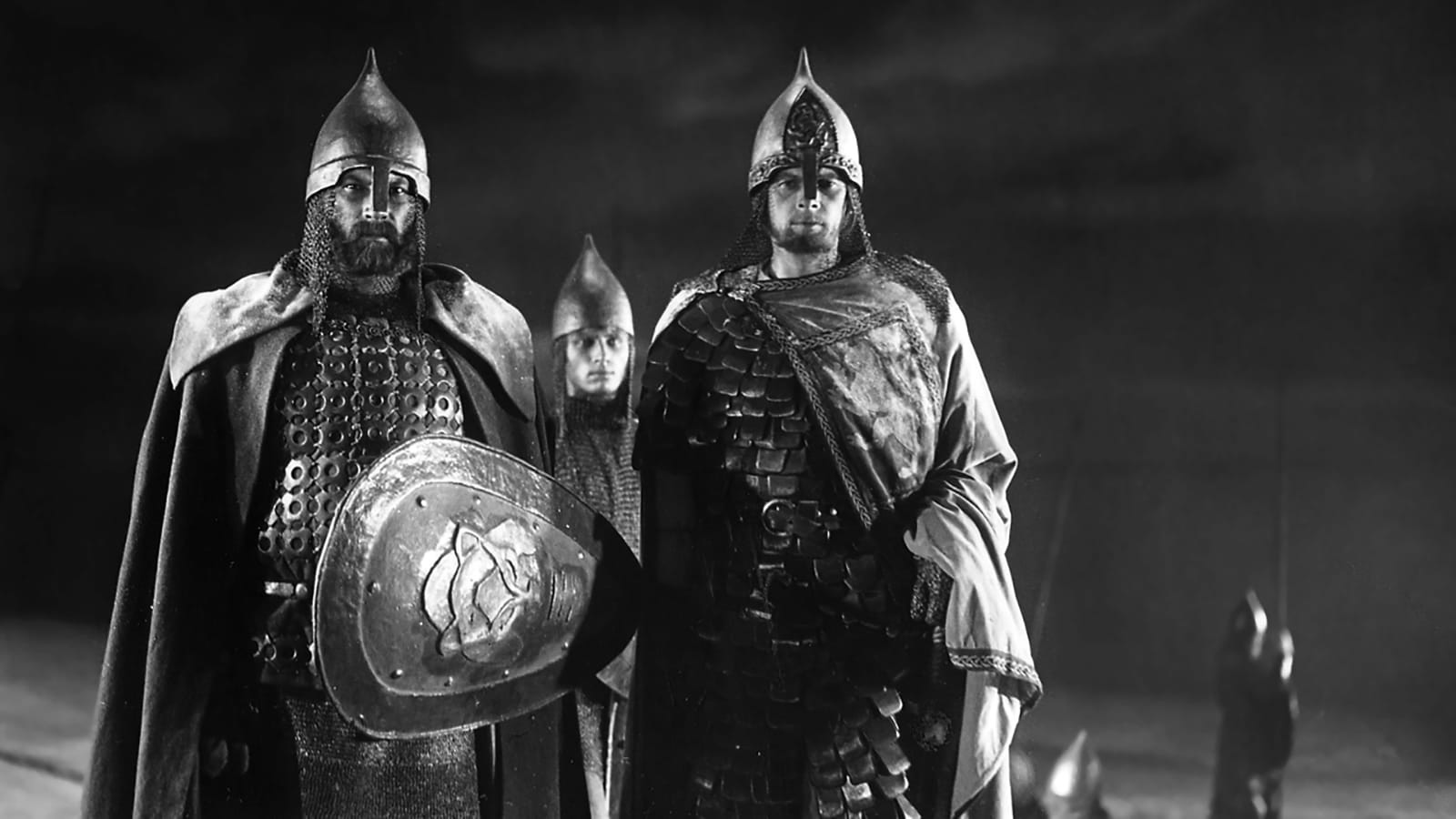A Collaborative Art
It had been nine years since silent film director Sergei Eisenstein had released a completed film. Fortunately, Alexander Nevsky (1938), his first sound film, was a popular success, and it restored Eisenstein’s reputation as one of the most innovative film directors. With this movie, he pointed the way for combining symphonic music with narrative imagery. Three years before Orson Welles and Bernard Herrmann explored similar terrain with Citizen Kane (1941), Eisenstein and composer Sergei Prokofiev treated visual and musical composition as collaborative forms of expression. As Eisenstein explained in his first book of film theory (translated by Jay Leyda and published in English as The Film Sense):
There are sequences in which the shots were cut to a previously recorded music-track. There are sequences for which the entire piece of music was written to a final cutting of the picture. There are even sequences that furnish material for the anecdotists. One such example occurs in the battle scene where pipes and drums are played for the victorious Russian soldiers. I couldn’t find a way to explain to Prokofiev what precise effect should be ‘seen’ in his music for this joyful moment. Seeing that we were getting nowhere, I ordered some ‘prop’ instruments constructed, shot these being played (without sound) visually, and projected the results for Prokofiev — who almost immediately handed me an exact ‘musical equivalent’ to that visual image of pipers and drummers which I had shown. With similar means were produced the sounds of the great horns blown from the German lines. In the same way, but inversely, completed sections of the score sometimes suggested plastic visual solutions, which neither he nor I had foreseen in advance.
Under Stalin’s reign in the 1930s, all Soviet art was subservient to the state. Eisenstein had to work within those restrictions in order to receive funding. That often led to non-artistic — even arbitrary — decisions that marred the completed project. In his book Eisenstein: Three Films, Leyda explains why a reel of Alexander Nevsky is lost, presumably forever:
One night, when he was working on the sequence of a brawl on the bridge at Novgorod, he was taking a nap when a call came from the Kremlin that Stalin wanted to see the film. Without waking Eisenstein the flustered official (probably Dukelsky) gathered up the reels and hurried off to a screening at which Stalin gave the film his approval. Only afterwards did the official discover that he had not shown the reel that Eisenstein was working on that night; not daring to reveal that Stalin had approved an incomplete film, the official removed the reel permanently from the released film, and it has remained hidden to this day.
Alexander Nevsky was meant to reflect events contemporary to the film’s audience, even though the story was based on history. Showing Teutonic invaders repelled by 13th-century Russian soldiers echoed growing concerns about a possible invasion by Hitler and the German army. Following the Soviet-German non-aggression pact of 1939, the film was withdrawn for being politically incorrect. It was reinstated in 1941 after Germany attacked the Soviet Union.
You don’t need to know anything about the political or historical context in order to enjoy this film. There’s a visceral satisfaction that comes from the interplay of images and music. The battle scenes, especially the ones that take place on a frozen lake, are probably the best battle scenes ever filmed. This movie is a feast for both the eyes and ears.
Alexander Nevsky
(1938; directed by Sergei Eisenstein and Dmitri Vasilyev)
The Criterion Collection (DVD)
Wednesday, September 13 at 1:30 a.m. eastern (late Tuesday night) on Turner Classic Movies
Reviews